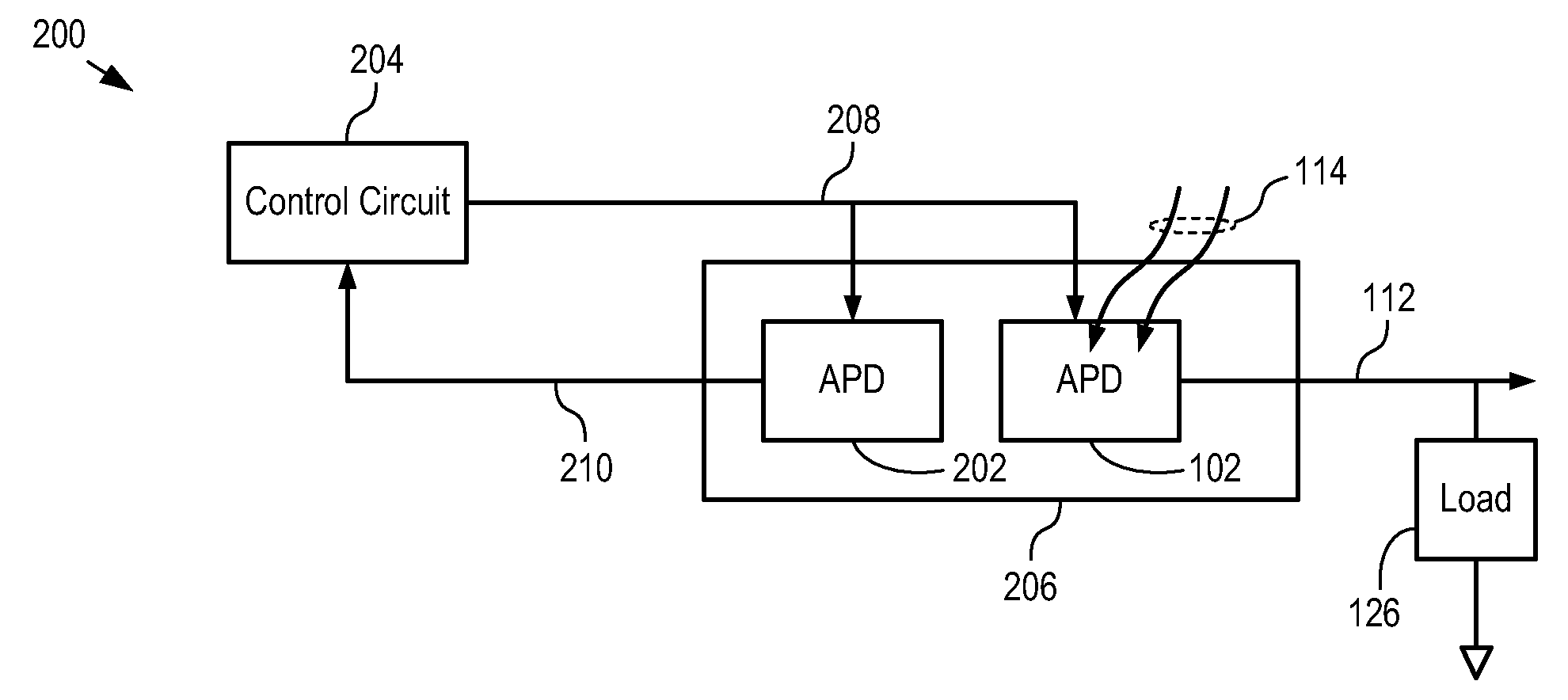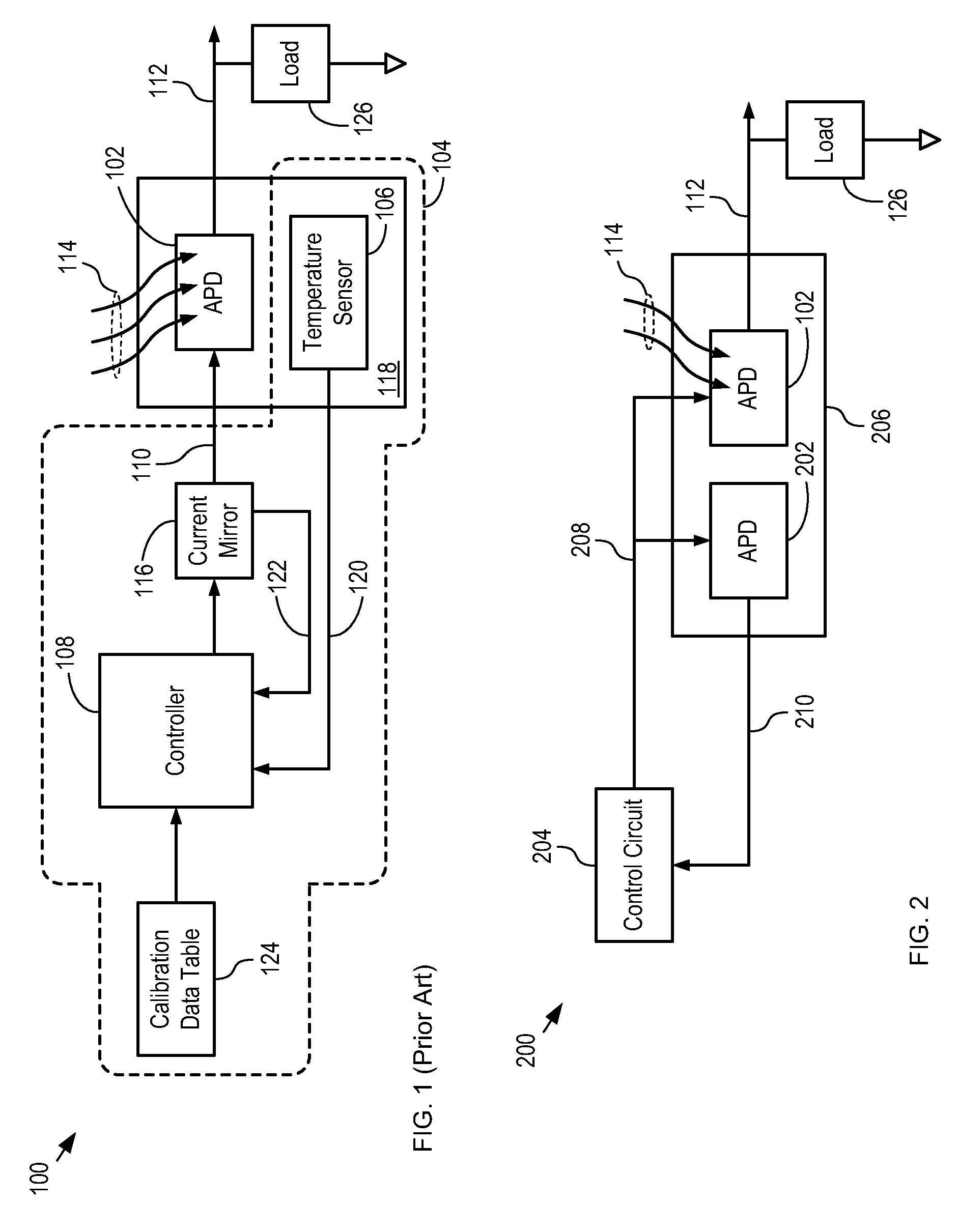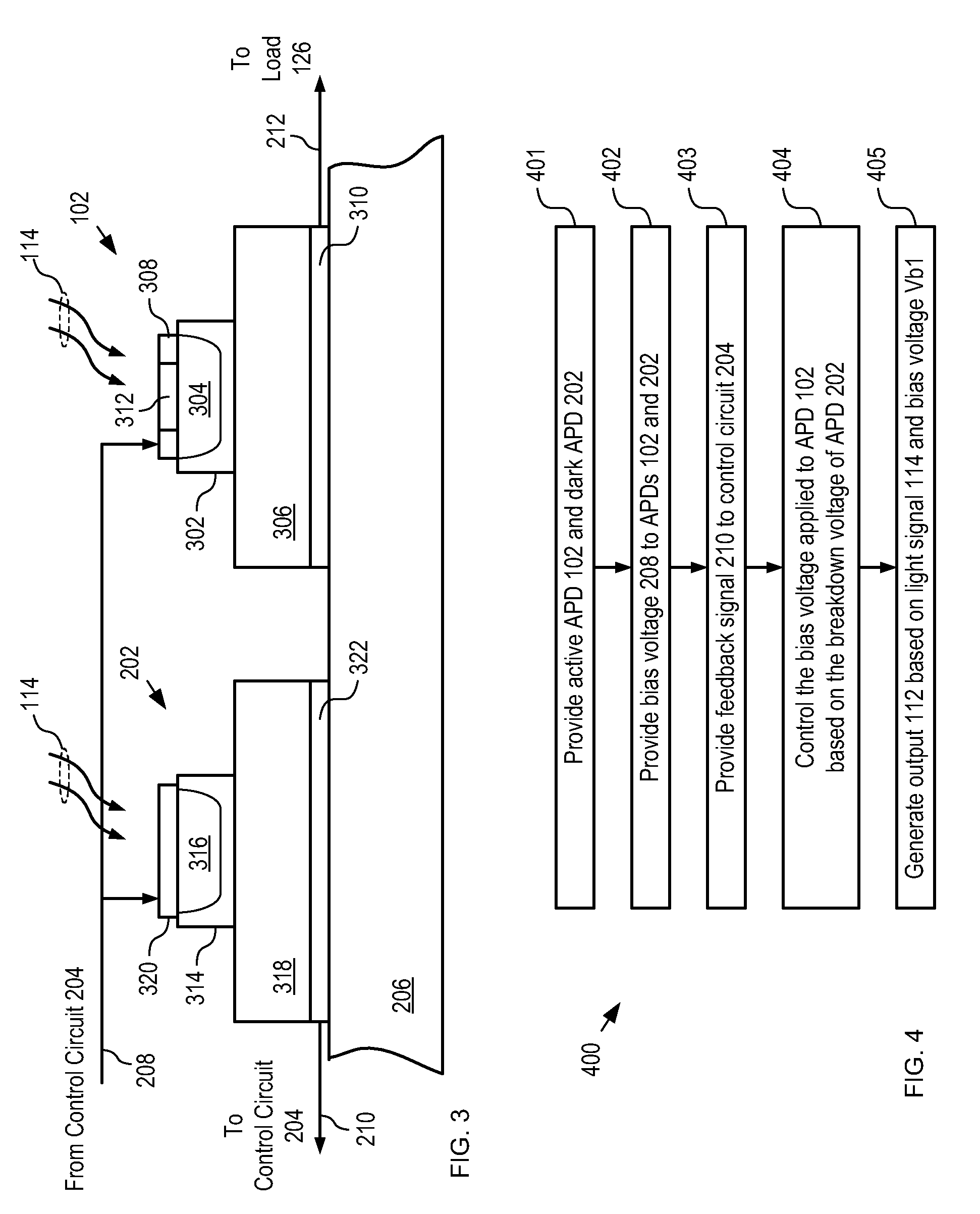Optical Receiver Comprising Breakdown-Voltage Compensation
a technology of breakdown voltage and optical receiver, applied in the field of photodetectors, can solve problems such as inability to interrup
- Summary
- Abstract
- Description
- Claims
- Application Information
AI Technical Summary
Benefits of technology
Problems solved by technology
Method used
Image
Examples
Embodiment Construction
[0032]FIG. 1 depicts a schematic diagram of an optical receiver in accordance with the prior art. Optical receiver 100 comprises APD 102, temperature compensation circuit 104 and load 126.
[0033]APD 102 is a conventional indium-phosphide-based avalanche photodiode designed for operation within the wavelength range of approximately 1000 nm to 1700 nm. APD 102 generates electrical output signal 112 in response to incident light signal 114. The gain of APD 102 is determined by the voltage with which it is biased. For the purposes of this Specification, including the appended claims, “bias voltage” is defined as the voltage potential induced between the cathode contact and anode contact of an APD. Electrical output signal 112, therefore, is based on the intensity of light signal 114 and voltage 110. Moreover, for the purposes of this Specification, including the appended claims, “offset voltage” is defined as the difference in voltage potential between the bias voltage and APD breakdown ...
PUM
 Login to View More
Login to View More Abstract
Description
Claims
Application Information
 Login to View More
Login to View More - R&D
- Intellectual Property
- Life Sciences
- Materials
- Tech Scout
- Unparalleled Data Quality
- Higher Quality Content
- 60% Fewer Hallucinations
Browse by: Latest US Patents, China's latest patents, Technical Efficacy Thesaurus, Application Domain, Technology Topic, Popular Technical Reports.
© 2025 PatSnap. All rights reserved.Legal|Privacy policy|Modern Slavery Act Transparency Statement|Sitemap|About US| Contact US: help@patsnap.com



